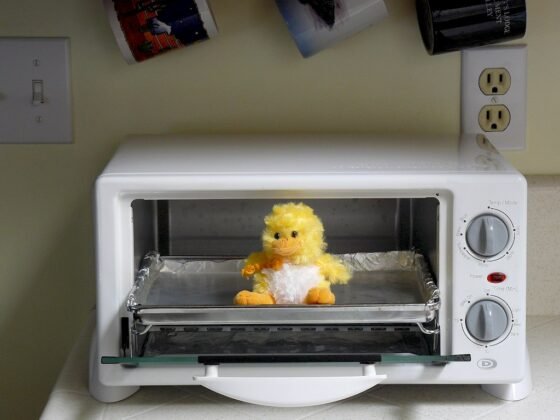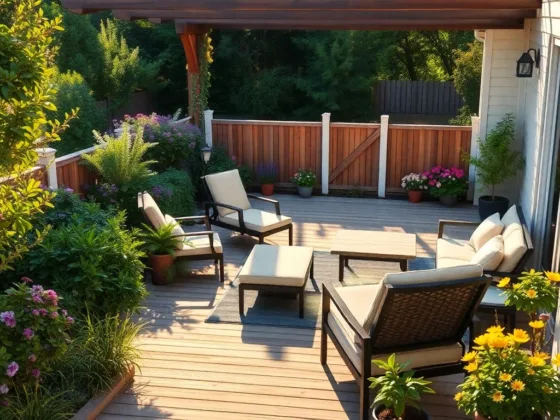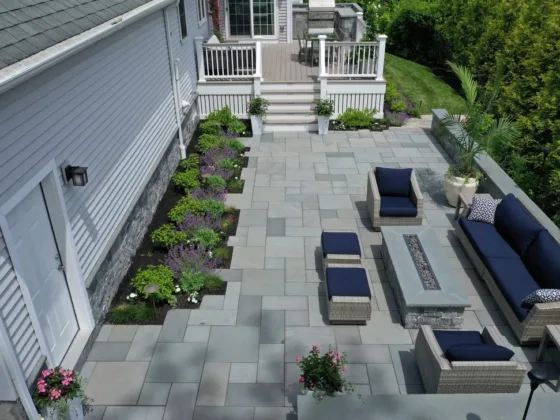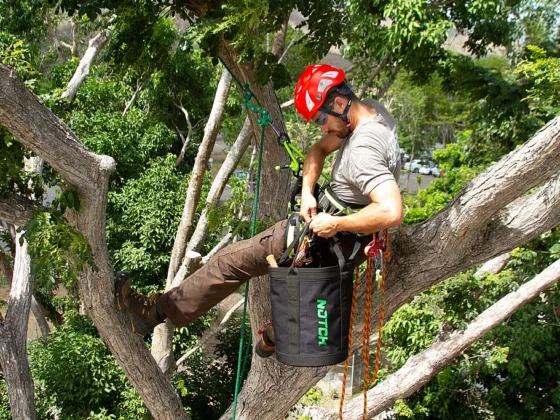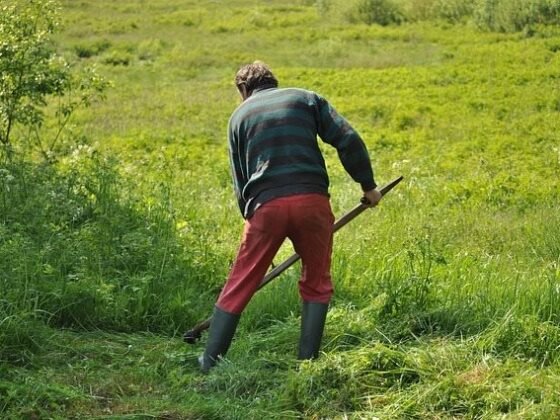Table of Contents Show
If you’re in need of a drought-friendly alternative solution to your yard, you should definitely consider installing artificial grass. Synthetic grass doesn’t need water, is easy to maintain, and is a certified all-seasoner.
However, a lot of pet owners, most dog owners, have some concerns about how switching to synthetic might affect their pets.

Fortunately, artificial turfs are very safe for dogs and are probably the best solution that will help you and your dog enjoy a clean outdoor space.
Below are 6 reasons to explain why.
Read Also:
1. It’s Non-Toxic
One of the most prominent issues dog owners have with synthetic lawns is the potential lead exposure involved. Scientific studies on earlier manufactured artificial grass revealed that there was a lead in the material.
Lead has been directly associated with problems such as cognitive impairment and peripheral neuropathy. Owing to the nature of dogs to try and lick, chew on, or even eat grass, this is a big concern for dog owners.
However, modern artificial lawn products don’t have any traces of lead. Additionally, they look and feel better compared to the much older options. Another benefit is that while natural grass would need some fertilizer or weed-killer that could pose a health risk to your pet, synthetic grass will do just fine without either.
In 2008, synthetic grass manufacturers signed an agreement to make sure artificial grass would not pose a health risk to buyers. Make sure you buy from a reputable artificial grass brand to avoid exposing your pet or family to health concerns.
2. They’re Easy to Clean and Maintain
Artificial grass is easy to clean. Your dog’s excretion can leave a rather unpleasant odor all over your lawn. All you need to do to clean up is to pick up your dog’s poop and hose the specific area off.
Artificial lawns usually have drains installed beneath the surface of the grass so that your dog’s urine can simply sip through without creating a puddle.
Just to be thorough, you can sanitize your artificial yard using a sanitizing spray, although a hose pipe should work fine.
Another issue with natural grass lawns is the propensity of attracting bugs like ticks and fleas. Such pests are a risk to your dog and may make your pet’s life very difficult.
Due to their plastic nature, artificial lawns cannot accommodate an insect habitat.
3. it’s a Great Surface for Dog Play
This is perhaps the most advantageous aspect for your dog if you decide to install an artificial lawn. It can be a fantastic area to play on especially if you go for a spongy type of synthetic grass. Your dog will surely feel the comfort under its paws.
Natural grass lawns tend to be uneven and can potentially hurt your dog as it runs around. A good artificial grass installer should be able to level the ground before laying down synthetic grass.
However, if not done correctly, unlevelled grounds could cause your pet to fall and get hurt.
This is also beneficial to anyone who wants to play with the dog in your yard. Kids and other family members can comfortably fall on the ground as they play with your family’s furry friend without the worry of grazing their skin or hurting themselves more severely.
4. Artificial Grass is Highly Durable
Synthetic grass is specifically designed to withstand immense foot activity. Your dog can spend all day running all about the artificial lawn and it will not show any signs of wear or damage.
Another plus to this is that dog urine cannot stain artificial grass. Dog urine has high levels of nitrogen. Although it’s both colorless and odorless, too much of it can have damaging effects on natural grass lawns.
Artificial turfs will not lose color as the pee will penetrate the backing of the lawn and away into the drainage system.
The same goes for the weather as well. No matter the conditions, synthetic grass will still look fantastic for you and your pet to enjoy at any time of the year.
Good quality synthetic grass usually comes with fantastic UV resistance abilities so you won’t worry about harsh weather elements beating away at your lawn.
5. Your Dog Won’t Dig It Up
Even the slightest of rainfall or morning dew can create mud all over your lawn if you have natural grass. If you have a playful dog, then you know there’s a chance your dog will find a way to get mud all over it and bring all the dirt inside your house.
Hyperactive dogs love to dig up real grass lawns for food, nutrients, or simply to get to the mud. Dug holes around your yard will create ugly bald spots on the grass carpet.
With an artificial lawn installed, your dog will be less motivated to dig up the grass because it doesn’t provide direct access to mud.
6. The Price Is Convenient
At this point, you’re probably thinking that you’d have to cough up quite a sum to have a high-quality synthetic lawn for your dog to play in. In truth, if you’re smart about it, the cost of installing artificial grass should be quite reasonable.
A good way to make the cost affordable is by looking for pre-used artificial grass. Synthetic grass that has been used before is environmental-friendly as it can be recycled and made to look brand new again.
Another economically favorable aspect of synthetic grass is that unlike natural lawns, you won’t have to pay to have the yard mowed or manicured.
The Grass is Greener Where It’s Synthetic
Some of the best moments dog owners share with their dogs are of them running and rolling around in the yard on a clear, sunny day.
Unfortunately, dogs tend to cause a lot of damage to the lawn. They dig, pee, and poop just about everywhere on the grass, leading to thinner threads of grass or patches of brown or yellow spots.
That’s why artificial lawns have become widely popular among dog owners.
One really important aspect you should consider before installing a synthetic lawn is drainage. An effective drainage system will reduce odors and avoid pooling of water or dog urine in your yard. With good backing, your pet will be grateful for a cleaner and safer play space.
